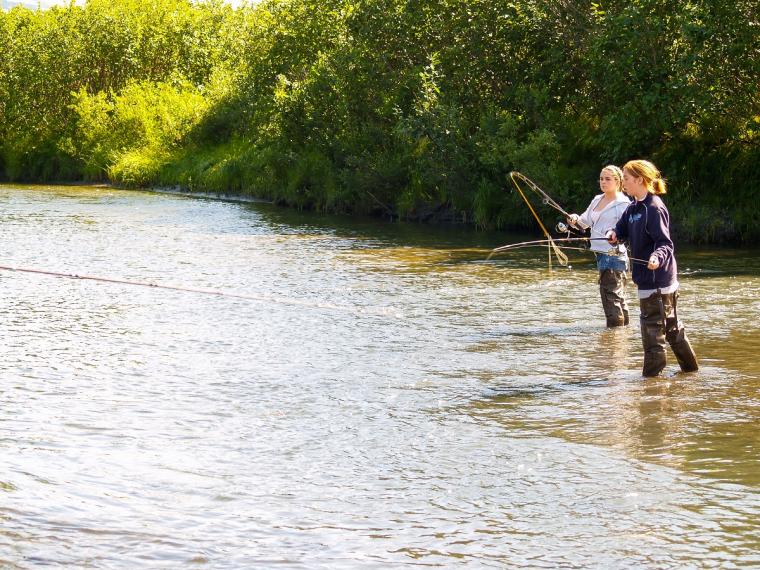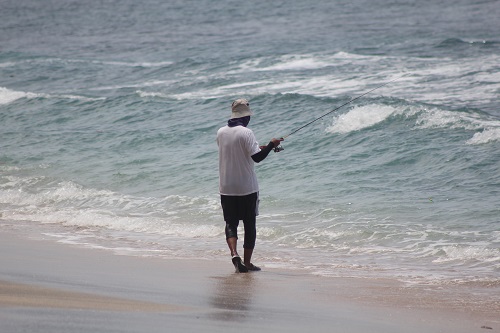
2020 had a lot of people blowing the dust off their fishing rods and tackle boxes. Three years later, the sport’s popularity continues, with new populations: minorities (African American and Latino anglers) in the mix, as well as women (one of the sectors contributing most to economic impact, according to one study).
That’s all good news, but what are the takeaways for event owners? First, it’s essential to know exactly what many of today’s anglers are after. Hint: While they watch coverage of high-level tournaments, their reasons for fishing may be entirely different.
According to data from the Recreational Boating & Fishing Foundation’s (RBFF) 2023 Special Report on Fishing, Americans continue to find enjoyment, companionship and peace of mind on the water. In 2022, 54.5 million Americans ages six and over went fishing, an increase of 4 percent over 2021 and just under 2020’s high of 54.7 million.
RBBF said that as concerns around loneliness and mental health continue to grow, especially among youth and adolescents, fishing and boating provide an excellent opportunity for connection, as the report indicates. Last year, only 19 percent of anglers typically fished alone, with eight in ten participants choosing to fish in groups of two to five.
Something that backs up this note is the fact that fishing is growing in popularity at the high school level, allowing teens to participate in fishing as a competitive sport on behalf of their schools, even earning varsity letters and gaining their classmates’ attention – and that is before you take into consideration the fact that increasingly, bass fishing is becoming a scholarship sport. And these days, more women, Millennials and GenZers are renting boats. Still others are upscaling the boats they have.
Among the options that make fishing in competitions more user-friendly (particularly to those just re-entering the sport, or even those entering for the first time) are virtual tournaments. These use an app-based model that allows the angler to log into the tournament, pay fees and upload photos of fish taken. (One example is Fish Donkey, described here.) Participating tournament anglers can only use photos within the app (rather their own photos already on the phone) and are able to keep tabs on the leaderboard and rules.
Virtual tournaments are an excellent way of encouraging new anglers to compete in events (including those who lack boats, expertise or updated tackle).
According to the Mankato Free Press, tournament directors have been requesting customizations that allow their tournaments to function. For example, the Brainerd (Minnesota) Jaycees “America’s Ice Fishing Tournament” requested a way to put all species in their annual ice fishing contest on equal footing within the Fish Donkey app, in a way that would be unique to them:
“Fish Donkey was able to make it work. The Brainerd Jaycees have five species categories and the Minnesota Department of Natural Resources helped create a formula for the different species that applied up to 100 points for a major trophy, and less points descending by size, so that your points would help you compete across species.
 “Obviously it will take some tweaking to be used elsewhere or across the country,” said Darren Amundson, owner and inventor of the app, “but it’s an exciting way to keep people on an even playing field.” (Oh and bonus points: It does not reveal the exact location of the angler’s fishing spot. That sweet space is sacred.)
“Obviously it will take some tweaking to be used elsewhere or across the country,” said Darren Amundson, owner and inventor of the app, “but it’s an exciting way to keep people on an even playing field.” (Oh and bonus points: It does not reveal the exact location of the angler’s fishing spot. That sweet space is sacred.)
But the diversity of fishing can’t be denied, and the demographics speak for themselves. The RBFF report shows the following:
- 19.8 million women went fishing in 2022, a 40 percent increase over the past decade; however, RBFF says much needs to be done to welcome them into the specialty retail space.
- 4.1 million Americans tried fishing for the first time in 2022, up from 3.7 million new participants the prior year;
- Participation among children ages 6-12 grew by 3 percent to 7.8 million, over one million higher than a decade ago;
- Between 2019 and 2022, the average participation among children ages 13-17 grew by 6 percent annually;
- 5.1 million Hispanics fished in 2022, an all-time high.
“Even after many have regained a sense of normalcy and returned to old routines, people are still choosing to fish and boat,” said RBFF President and CEO Dave Chanda. “With a renewed focus on wellness, fishing and boating offer an accessible outlet for those looking to unplug, escape the stresses of everyday life, and spend more time with friends and family.”
Eighty-six percent of current fishing participants started fishing before age 12, and 23 percent of those considering but not yet participating in fishing were under the age of 18, which underscores the importance of introducing fishing at a young age.
The more diverse fishing has become, the more organizations are working to create forums to accommodate and encourage them. Among those:
The Lady Bass Anglers Association puts on its own tournaments and works to increase the awareness of – and the economic reward for – women who fish competitively.
Ladies, Let’s Go Fishing strives to raise awareness of, and opportunities for, female anglers at the recreational level.
Brown Folks Fishing is a community-based organization that is by and for black, indigenous, and people of color (BIPOC) anglers. Its goal is to cultivate a community for BIPOC in fishing and its industry.
Ebony Anglers is an all-black female sport fishing team. In addition to competing, the group puts on fishing camps to introduce children to angling.
Vamos a Pescar is the Recreational Boating and Fishing Foundation’s Hispanic outreach initiative. (Vamos a Pescar is the Spanish translation of Take Me Fishing, the English campaign.) Both initiatives continue to inspire new interest in fishing and boating while equipping consumers with the practical information needed to get on the water. In FY22, brand awareness reached a three-year high and Take Me Fishing garnered:
- 4.2 billion earned media impressions
- 182 million social media impressions
- 39 million views on its YouTube channel
- 10 million visits to TakeMeFishing.org
SDM will continue to follow this developing issue.

